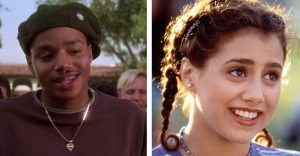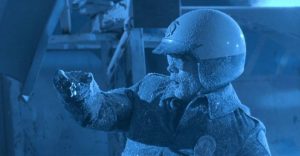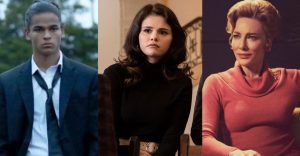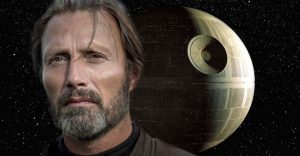World’s Most Wanted: What The Documentary Leaves Out

World’s Most Wanted documents the crimes of notorious international criminals, but naturally leaves out plenty of relevant information. As a whole, the Netflix series zeroes in on specific dates and places, allowing the audience to understand the timeline of events. World’s Most Wanted covers the basics for curious streamers, but doesn’t quite explore how the subjects’ crimes have affected the rest of the world.
World’s Most Wanted kicks off with the curious case of Ismael “El Mayo” Zambada Garcia, the head of the Sinaloa Cartel. Interviewees discuss the subject’s mysterious persona, and how he’s manage to evade authorities for decades while presumably living in his native Mexico. America’s Most Wanted also follows the footsteps of Félicien Kabuga, a notorious Rwandan business man who funded the genocide of the Tutsi people, and was actually captured in 2020. The final three episodes of the Netflix docuseries are dedicated to the secret maneuverings of terrorist Samantha Lewthwaite, Russian mob boss Semion Mogilevich, and Sicilian mafia leader Matteo Messina Denaro.
To its credit, World’s Most Wanted effectively deconstructs WHY the collective fugitives are so notorious. The Netflix docuseries includes a vast array of commentaries from interviewees, all of whom help create a full portrait of the central subjects. Still, World’s Most Wanted mostly takes a procedural approach, and doesn’t quite touch upon psychological factors that affect the main fugitives, and thus affect society as a whole. Here’s what World’s Most Wanted leaves out (or doesn’t fully explore).
El Chapo’s Legacy

The episode about the Sinaloa Cartel centers around three figures: El Mayo (the mysterious subject), El Chapo (Joaquín Guzmán, El’s Mayo’s business partner), and El Vicentillo (Vicente Zambada Niebla, El Mayo’s son). World’s Most Wanted primarily focuses on El Mayo’s organizational structure, and the events that led to the capture of El Vicentillo in 2009. Netflix explains how El Mayo’s son decided to turn on El Chapo rather than his own father, which sets in motion a brief sequence about Guzmán’s cultural persona. But rather than referencing El Chapo’s legacy and why that is culturally significant, World’s Most Wanted shows an FBI agent recalling his pleasure upon seeing El Chapo crying after his arrest. Netflix doesn’t acknowledge that El Vicentillo is married to El Chapo’s daughter (or that he has two children with her), nor does the docuseries explore reports that El Chapo’s own sons are becoming more powerful within the Cartel.
Félicien Kabuga’s Backstory

Streamers may be terrified by the violent images shown in the Félicien Kabuga episode, but may left wondering about his motivations. Meaning, the Netflix true crime docuseries explains the basics of the Rwandan genocide, and how Kabuga imported thousands upon thousand of machetes that were used to slaughter the Tutsi population over the course of 100 days. Unfortunately, World’s Most Wanted doesn’t offer much insight about Kabuga’s philosophies or the events that affected his worldview. Did something horrible happen to Kabuga as a child? Or was he influenced by the culture he was raised in? These questions go unanswered. Instead, Netflix shows the hunt for Kabuga after he fled Rwanda, and glosses over his formative years that ultimately led to him founding a radio station called Radio Télévision Libre des Mille Collines that delivered hateful messages.
Kabuga is the only criminal featured in World’s Most Wanted who has been found and arrested; however, his trial is still pending, meaning that the Netflix documentary was unable to provide a conclusion to his story. One key point of contention is where Kabuga will be tried: Kabuga was arrested in France, not Rwanda, and has requested to be tried in the former. He also may be tried in Tanzania. Where Kabuga’s trial takes place will certainly impact the outcome. If Netflix renews World’s Most Wanted for subsequent seasons, the aftermath of Kabuga’s trial would be fascinating subject matter.
What Triggered Samantha Lewthwaite

World’s Most Wanted does indeed reference the early years of Samantha Lewthwaite, who lived in Northern Ireland before settling in England, but doesn’t quite pinpoint why she turned to a life of crime. It’s clear that Lewthwaite was familiar with “The Troubles” conflict in Northern Ireland, and that she befriended Muslims after her parents’ divorce; yet, there’s a major gap in the story, most notably what happened in Lewthwaite’s life between 2002 (when she married Germaine Lindsay) and 2005 (when Lindsay participated in the 7 July 2005 London bombings). The Netflix docuseries essentially shows the evolution of a terrorist, but without analyzing the psychological factors that affected her decision-making.
Semion Mogilevich’s North American Connections

World’s Most Wanted links Semion Mogilevich to various European locations — including Budapest, Prague, and Naples — but only briefly mentions a connection to North America. The Netflix docuseries once again covers all the big events in the subject’s life, and also features interviews with Czech organized crime figures who were threatened by the mobster, but there’s no real effort to explain how this particular subject has affected American and Canadian culture through business. There’s a brief reference to Mogilevich’s understanding of the global financial network, but little attention paid to his Los Angeles rackets or his full connection to the Toronto Stock Exchange. As a result, some viewers may believe that Mogilevich doesn’t affect their way of life (when in fact he probably does, in one way or another).
Matteo Messina Denaro’s Influence Outside Sicily

For the episode about Matteo Messina Denaro, World’s Most Wanted repeatedly cites the “mafia,” but doesn’t cover the basics about the mafia in mainland Italy. Instead, the Netflix docuseries stays focused on Sicily, specifically the subject’s home region of Trapani. World’s Most Wanted explains why Denaro is so feared and influential, but never really acknowledges the “mafia” of pop culture, or even the fact that “the boss of all bosses” comes from a region that inspired the Corleone family of The Godfather. One could argue that the filmmakers’ wisely stray from pop culture references in order to focus on the real-life crimes. Still, this particular episode is further evidence that the collective episodes don’t quite examine the big picture like other true crime series, like Netflix’s The Business of Drugs, but rather explains the basics, which — to be completely honest — are entirely fascinating.
About The Author


















